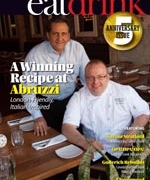The Name Game in Korean Classrooms
Being newlyweds when we left for South Korea, we promised our families back home we wouldn’t procreate any children of our own while living abroad; mostly so our parents wouldn’t miss out on all the grandparent-y stuff, but also because we were travelling to delay any domesticity in the early stages of marriage. As English teachers at a private school, we saw dozens of students, between the ages of five and fifteen, in rotating classes throughout each day, so having children of our own was the furthest thing from our minds. But that did not stop us from thinking about baby names, because naming children in South Korea is not only a parental duty – foreign teachers in ESL schools are responsible for giving English names to students who don’t already have one.
On my first day of teaching in a South Korean classroom, I was already anxious about being the centre of attention with ten students staring up at me from their desks. Then a new little boy entered the classroom and my Korean teaching partner told me to give him an English name. Just like that – no negotiating with the child’s parents, no consulting a baby name book. Parents have at least nine months to plan a name for a new baby, most couples have names picked out for what they think their future progeny should be called long before pregnancy is even discussed. But up in front of all these students, I was nervous by being put on the spot because I hadn’t planned for this. What if I couldn’t think of a good name? He looked up at me with wide-eyed anticipation. I tried not to over think it.
“Willy,” I said, pointing at him. “You are now called Willy.” I felt like some goofy fraternity brother giving a nickname to a new recruit, like I’d seen John Belushi do at Delta Tau Chi in Animal House.
Willy smiled. At least his name warranted a smile which relieved my anxiety a bit. I named him Willy, for no other reason than I was under pressure to come up with something on the spot. As new students joined the school, giving out English names became a daily responsibility that we thought was usually reserved for parents.
It’s one thing to name your own baby but, as new students enrolled in our classes, it became a daily requirement and a big responsibility. I worried about giving out unpopular or laughable names. One trick to ease the process was to ask the student his or her Korean name and make an English name that sounded similar, such as Sujin becoming Susan. Or sometimes the Korean name had a meaning from which we could formulate an English name. For instance, my wife’s first new student had a Korean name meaning “pearl” so she became known as Pearl. Of course, this didn’t always work and, as this naming convention continued throughout the school term, we often had to be creative to come up with English identities for scores of Korean students. It wasn’t surprising that our school began sounding like our hometown back in Canada, with Evelyn’s, Chad’s, Andy’s, and Jack’s. A baby name book wasn’t needed after all as we dredged up familiar names to make our school feel more like home.
Traditional Korean names are chosen for auspicious reasons to honour the individual and the family. Each name is composed of three parts: the family name comes first, followed by a generational name, and an individual name at the end. What my wife and I were doing by naming students Frankie and Ace didn’t seem to fit with Korean custom; nonetheless, it was a requirement of being educated in an English school and students became comfortable enough in the English-speaking classroom to re-invent names of their own. They caught on that English names were a transient identity for classroom purposes and if a teacher could change a Korean name to an English name, they could just as easily change from one English name to another.
Several boys picked the name Harry, to replicate their favourite pint-sized wizard, since the Harry Potter novels and movies have inevitably been transliterated into Korean. One memorable student, originally named Ben, decided he would like to be known as HappyMeal. This started a new movement of names that aren’t really names, like Pepsi and Dragon. Also cropping up were English-sounding words that could be construed as names, but were more likely just snappier sounding words, such as Kez and Kephi and Kixx. These kids could rename themselves in a fashion resembling the internet-crazed trend of giving self a wacky alias for social media accounts. Even if their English names tended toward the goofy side, they had their original Korean names to fall back on when not in English class.
Even while having fun with the language in this way, students resorted to their original English names after the sillier identities wore off. This name-changing game hit its peak, however, when one student seemed to be having an identity crisis. At the beginning of the school term, her name was June, but it changed often and she seemed bothered when asked what her name was on any given day. Maybe it was a translation problem in her own mind, as if not satisfied with the English words meant to describe her. I said that June suited her perfectly and she accepted that, taking comfort that an English-speaker approved of it. With such a strong emphasis on learning English in the Korean society, receiving a new name is part of that education. When parents hear that little Park Kyeong Hee is also known as June, they are content that their child is one step closer to being educated in the English language.









